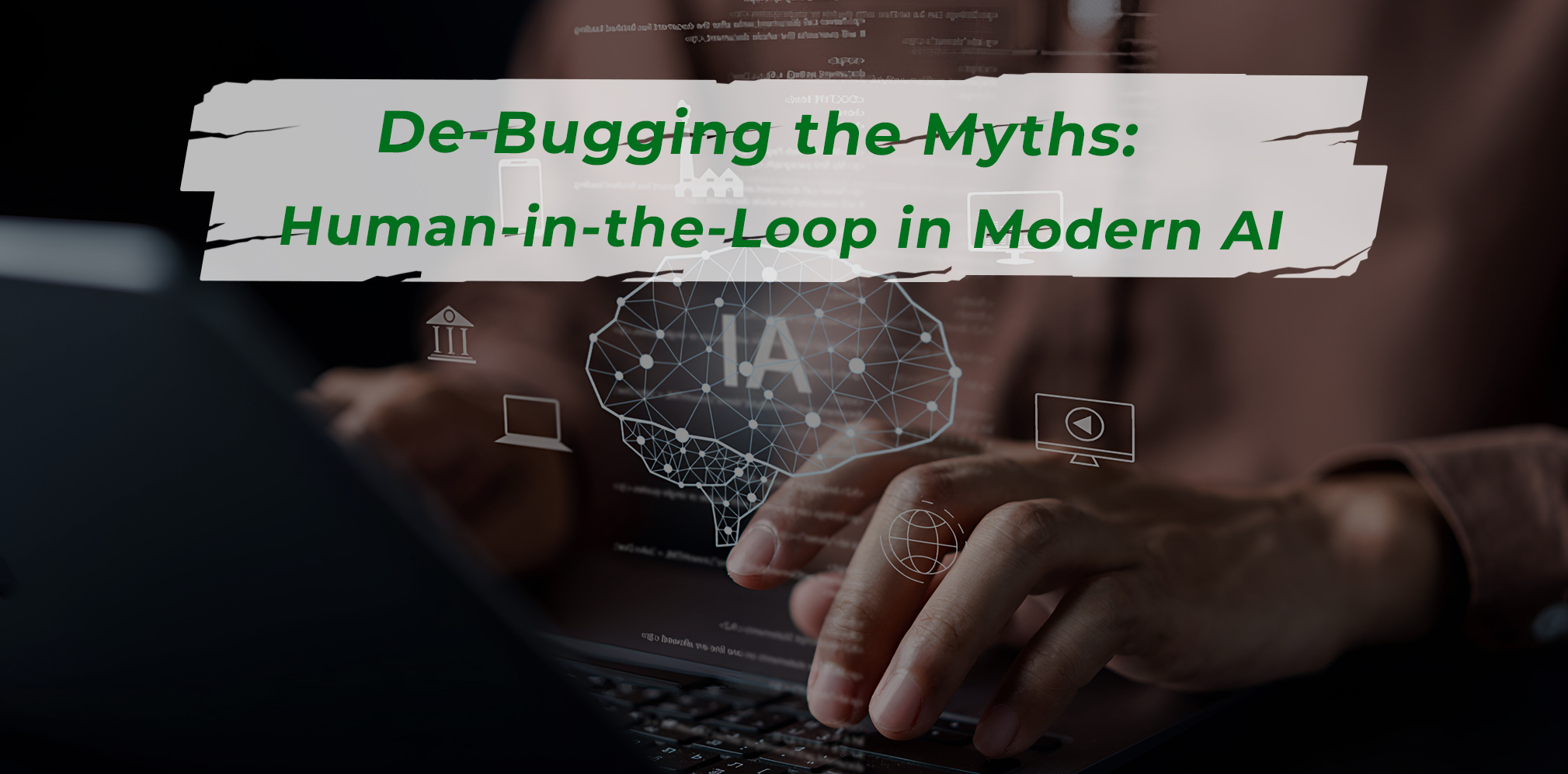As Artificial Intelligence (AI) integrates deeper into everyday life i.e. from autonomous vehicles and satellite imaging to precision agriculture, e-commerce automation, and clinical diagnostics; trust in AI outcomes becomes paramount. In this data-driven era, success hinges not on model complexity alone, but on the integrity of the data feeding these models.
Yet, despite the critical need for accuracy, the role of Human-in-the-Loop (HITL) in training, validating, and refining AI models remains clouded by misconceptions. Many believe that HITL belongs to an outdated era, that automation should be purely machine-led, and that human oversight slows innovation. At NextWealth, we know the opposite is true.
With over a decade of expertise in scaling HITL workflows across computer vision, 3D LiDAR, and multimodal AI, NextWealth has pioneered data annotation practices that put human judgment at the heart of model evolution. Here, we take on the most common myths and reveal why HITL is not just relevant yet essential.
Myth 1: HITL is Old-School—Full Automation is the Future
While automation has transformed industries, the belief that AI can function flawlessly without human input is flawed. In domains where safety, ethics, or high precision are involved like autonomous driving or healthcare; blind automation is risky. Fully automated models often misclassify rare events, struggle with ambiguous edge cases, or fail to generalize across cultures and geographies.
Human reviewers bring context, judgment, and domain knowledge, especially during the data training phase and real-time validation loops. At NextWealth, HITL is not a fallback but a foresight; a safeguard against systemic AI errors.
Myth 2: HITL Slows Down Scale and Productivity
It’s a misconception that human involvement slows AI development. In fact, without early human intervention, models often require expensive retraining later. With HITL in place from the start, training data is better structured, and model debugging is faster.
At NextWealth, we combine pre-labelling automation with human validation, achieving 98%+ quality while reducing annotation cycles by up to 60%. HITL, when integrated with robust QA, tool plugins, and model-assisted features, actually becomes a catalyst for scale.
Myth 3: HITL Is Not Needed After Initial Model Training
AI models are not static they drift. As new data enters, trends shift, or environments evolve, retraining becomes essential. Without HITL in continuous monitoring and incremental dataset updates, models decay in performance.
HITL ensures the right samples are selected for re-annotation, validation of model predictions is contextual, and domain experts guide retraining pipelines with fresh, accurate data. We’ve built workflows where our humans engage at each feedback loop, ensuring long-term AI reliability.
Myth 4: HITL Is Expensive and Not Scalable
While it’s true that human expertise requires investment, HITL done strategically is highly scalable and cost-effective. At NextWealth, we operate from Tier-2 and Tier-3 Indian cities, offering economic advantage while upskilling thousands of annotators in niche CV and NLP tasks.
We use productivity-linked pricing models—per object, per image, per mile—and align them with FTE rates and quality metrics (Precision/Recall, FTR). Our smart resourcing and automation-enabled throughput improvements prove HITL doesn’t need to be expensive; it needs to be efficient.
Myth 5: HITL is a Temporary Fix Until Foundation Models Take Over
The recent wave of foundation models like CLIP, SAM, and DINOv2 is exciting. Yet these models, trained on broad internet datasets, often lack fine-grain domain grounding. They generalize well, but struggle on localized, high-accuracy tasks like license plate extraction in specific geographies or understanding low-light LiDAR frames.
Human-in-the-loop ensures foundation models are adapted, fine-tuned, and corrected in real-world deployment. We’ve integrated SAM for segmentation at NextWealth, but rely on human QA to polish and validate outputs before use in safety-critical scenarios.
Real-World Success: How HITL Helps Build Trustworthy AI
Case Study 1: Autonomous Driving Dataset
NextWealth was tasked with segmenting road environments in Germany using fisheye camera input. The challenge was multi-fold: variability in rural and urban scenes, inconsistent lighting, and high object density (up to 31 objects/frame).
We deployed a rubric-trained team and built a phased HITL QA loop with calibration and retraining rounds. The result? Over 99% annotation accuracy and a 22% improvement in downstream model performance with fewer re-annotation cycles.
Case Study 2: Retail Checkout-Free Store AI
For a major US retail automation firm, NextWealth annotated thousands of store images for SKU detection and planogram validation. False positives due to similar-looking products and reflective packaging were a major concern.
We introduced HITL-assisted QA with edge-case flagging and product matching SOPs. Over 43% reduction in false checkout incidents was achieved within 6 weeks, and the model retraining loop became 3x faster due to structured human feedback.
Final Thoughts: HITL Is Not Optional—It’s Foundational
In the pursuit of truly intelligent AI systems, trust is everything. Models that perform well in labs but fail in deployment hurt brand credibility, regulatory compliance, and safety. Human-in-the-Loop is not just about annotation; it’s about enabling AI to reason better, learn adaptively, and act responsibly. At NextWealth, we see HITL as the invisible hand guiding AI toward precision, context, and resilience.As AI matures, our commitment is to scale HITL with smart tooling, domain SMEs, and predictive quality governance, feedback, and correction leads to a more trustworthy machine. Because in the real world, intelligent machines still need human wisdom to see clearly.

